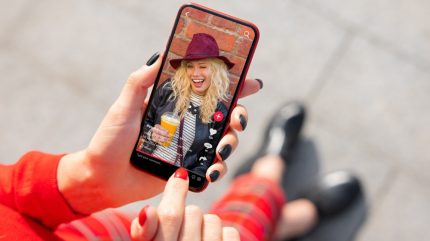Three key trends shaping the global womenswear market

THREE KEY TRENDS SHAPING THE GLOBAL WOMENSWEAR MARKET
The
global womenswear market is eyeing growth in 2025 with three themes set to
accelerate its success.
A GlobalData report titled ‘Global Womenswear Market to 2028’ explains the category experienced a slowdown in growth to 0.4% in 2024. This is compared to its growth of 4.2% to $758.3bn in 2023.
In 2025 it is is expected to grow by 3.6% as
consumer spending power improves with a forecast CAGR of 2.5% from 2023 to
2028.
However, its growth is expected to be
tempered by the expanding
resale market, which diverts spending from traditional retail as consumers
seek lower prices and more sustainable options.
Global womenswear trend 1: Disruptors changing the fast fashion landscape
Older fast fashion brands such as Boohoo, PrettyLittleThing and Asos have fallen into disarray in recent years. Boohoo reported a 16% decline in revenue for fiscal 2025, while Asos saw its total revenue for FY24 sink 18.1%.
Singapore-headquartered ultra-fast fashion giant Shein on the other hand, continues to steal market share thanks to its low prices, extensive ranges, constant newness, and ultra-fast reactions to fashion trends.
Its social media influencers and social media strategy also help the fashion company to remain top of mind with Gen Z shoppers.
There is a growing list of fast fashion disruptors joining Shein, including Cider, Temu and White Fox.
Temu has emerged as a tough competitor for Shein as it offers low prices combined with an immense product offering across its marketplace. Plus, it is now the second most visited ecommerce site globally after Amazon.
US fast fashion brand Cider launched in 2020 but already ships to over 130 countries. It has a slightly higher price point to Shein but has captured Gen-Z’s attention by being quick to react to social media’s micro-trends.
Australia’s White Fox has prices in line with the mass market, but it is successfully launching new products every week that tap into the latest trends. White Fox has also created a team of student ambassadors on social media that promote the brand in exchange for free monthly outfits.
Despite facing criticism for their ethical and environmental practices, these brands have thrived during the recent high levels of inflation with affordability being a higher priority for shoppers over sustainability, especially for younger shoppers.
Global womenswear trend 2: Ongoing demand for athleisure supports wider sportswear category
The report suggests womenswear is forecast to be the fastest growing sports category, growing at a CAGR of 4.2% between 2023 and 2028.
Globally, women are increasingly prioritising health and wellness, more active lifestyles and taking part in more sports.
Sports brands are developing their womenswear ranges and focusing more on female sports in marketing campaigns, however, the GlobalData report asserts that most of the growth within women’s sportswear will come from athleisure.
Athleisure remains high in demand thanks to its comfort and versatility and it still has plenty of scope for growth in emerging markets.
Athleisure’s ongoing popularity means established brands such as Lululemon are continuing to outperform within the global womenswear market.
Plus, new players continue to enter the space, such as Alo Yoga, Vuori, Tala and Adanola.
UK athleisure brand Tala, which was founded by influencer Grace Beverley in 2019 regularly promotes the versatility of its ranges on social media. It continues to expand into new categories, including tailoring and nightwear and is also tapping into new global markets.
UK athleisure brand Adanola is also targeting international expansion and is harnessing the power of celebrity collaborations to boost desirability among US shoppers. It hosts community events such as run clubs, hikes and rooftop yoga classes to connect with shoppers.
US’ California brand Vuori has also rapidly grown in popularity due to its simple and versatile designs. The brand has locations in London, Seoul, Shanghai and New York with plans to expand in Asia where the athleisure trend has more scope to grow.
Global womenswear trend 3: Brands urged to improve womenswear fit and sizing
The report notes poor sizing accuracy and fit continue to be concerns for women when shopping online.
A GlobalData survey found almost half (48.9%) of female fashion shoppers struggle to find items that fit them well. The same survey explained this results in high return rates with 62.5% of UK fashion shoppers that made returns in the 12 months to July 2024 stating they did so because of items not fitting properly.
This hinders profitability and has resulted in the likes of Zara and Asos introducing returns fees.
Technology, such as virtual try-on features and AI size recommendations can help to reduce some of these issues, as can brands introducing a wider range of sizes to suit different body shapes.
Some brands have already tapped into the diverse sizing opportunity. For example, US brands Abercrombie and Good American offer various waist and leg lengths and also have curve collections.
US inclusive fashion brand Universal Standard, which offers a size range from US 00 to 40 recently expanded its size exchange programme from 40 styles to 400. This allows shoppers to swap items for a different size up to a year after purchase with the retailer covering all costs. Its aim is to appeal to women whose sizes fluctuate regularly.
Virtual try-on is another area for growth as it allows shoppers to visualise how products would fit their body, which enables them to make more informed purchases and reduces the need for returns.
Two years ago (2023) Inditex’s Bershka introduced virtual try-on with personalised recommendations in partnership with AI technology company 3DLook. In October last year (2024) German online retailer Zalando launched virtual avatars with accurate body measurements that allow shoppers to visualise the clothes on their body type and get accurate sizing recommendations for a selection of Levi’s products.
